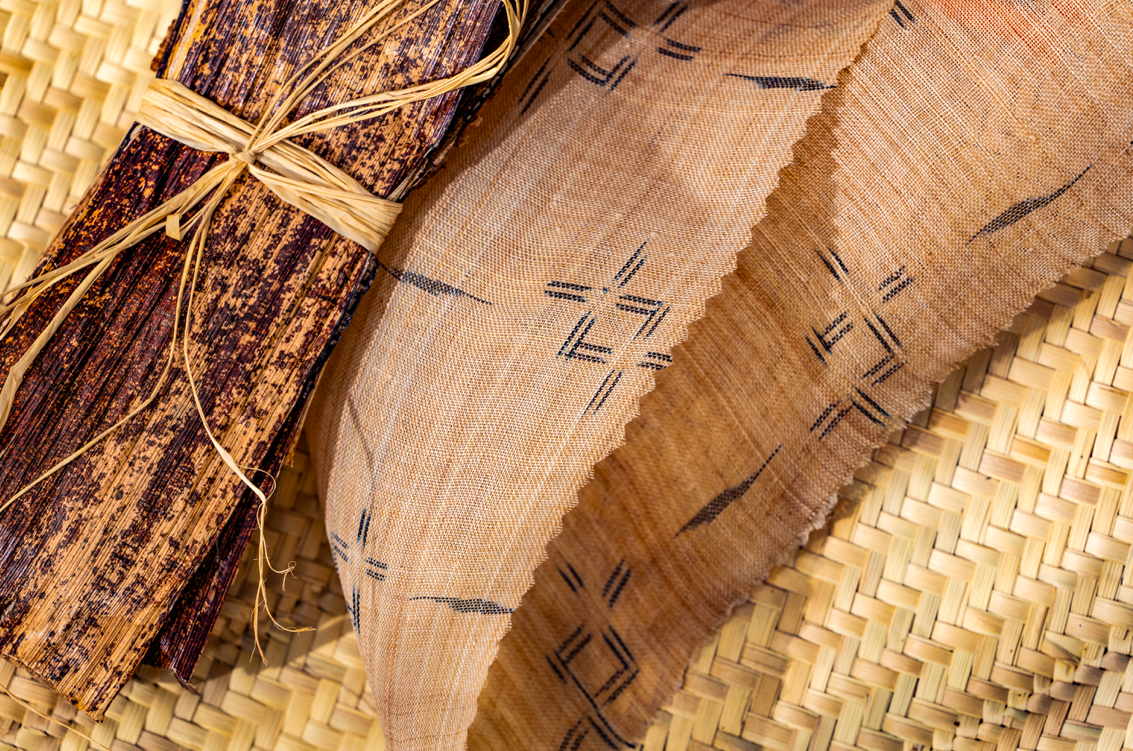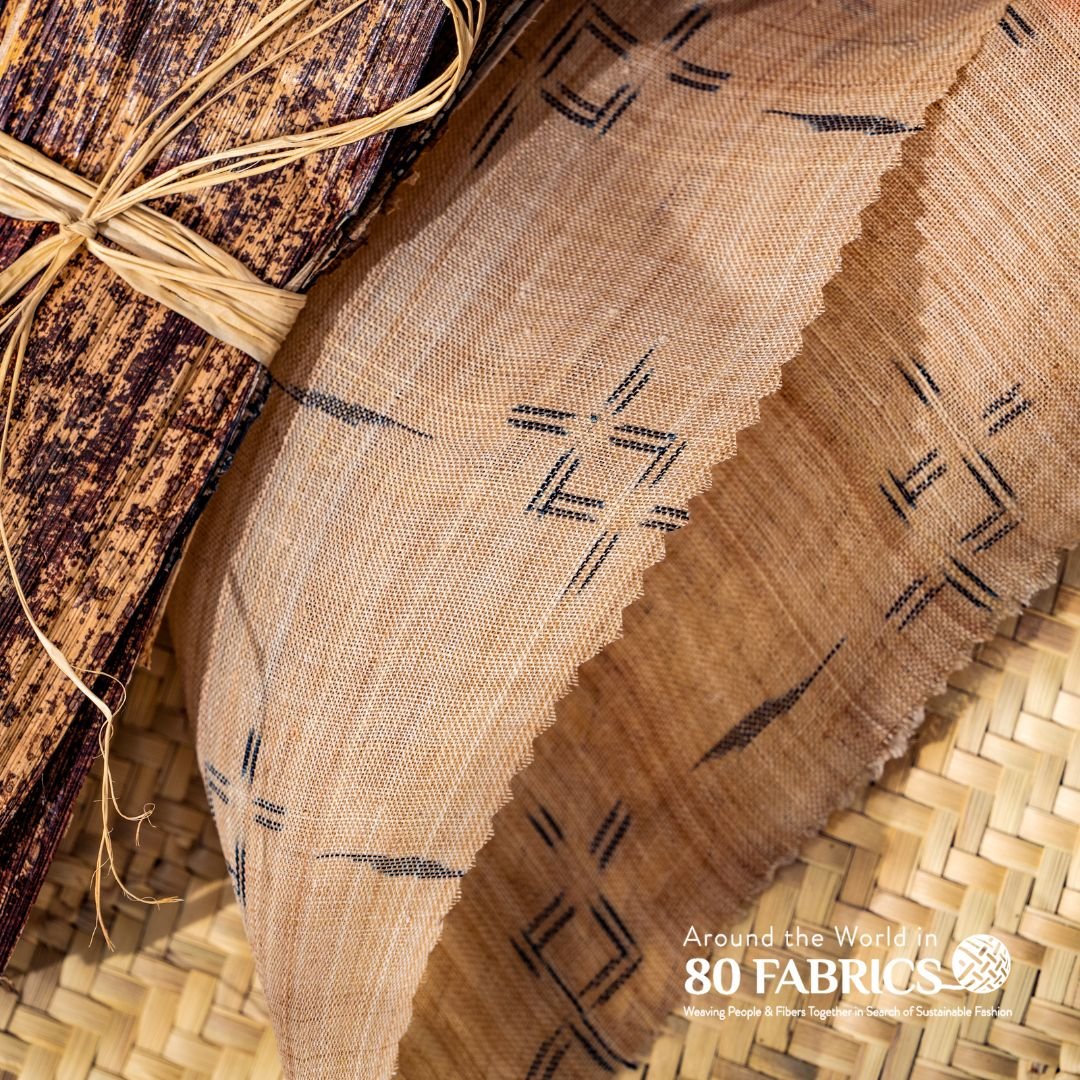
FABRIC: BASHOFU
Region: Japan
Fabric Name:
Bashofu
Origin:
Musa sp (basjoo), Japanese Banana plant
Who made our fabric:
Unknown
Natural history and ecology:
This fabric was brought back to life following a steep decline after WWII. Crafted from a specific variety of the banana plant Musa sp, bashofu is created through a painstaking and highly prized process.
What makes this so special:
With fewer artisans willing to take the time to learn the craft, and fiber yields lowering due to climate change, the production of bashofu is declining, and can possibly become a lost art.
“Supple, elegant cloth from the banana plant.”

“That’s what Kijoka Bashofu is: a community, the power of community.”
— Kana Taira/Bashofu
Kana Taira
Kana, of Kijoka Bashofu, spoke to ATW80Fabrics talking about her experiences with bashofu. Her grandmother had been the woman to revive the fabric after its struggle to stay alive following the Second World War. Kana has been around bashofu her whole life, and now living in Brisbane Australia, has said that she works the International Relations of the company. Kana noted sadly that there are less and less people working in the workshop, resulting in lower production. She says people are not learning the techniques of making Bashofu at a young age, and it is hard to master the production process in a short time. She also mentioned that climate change is impacting the weather patterns, confusing the makers on when the banana tree is ripe. It may look ripe on the outside, but inside the fiber is too tough, making it hard to make the soft, breathable kimono that Kijoka Bashofu is coveted for. Kimonos made by Kijoka Bashofu are top of the line, and everyone who wears a kimono wants to own their own. Because of this, prices and demand are very high. It takes constant work at the workshop to keep up with all of the demands that Kana and her family have. Kijoka Bashofu is keeping the tradition of Japanese Bashofu alive for everyone to see, and is also using natural fibers sustainably to do it!

